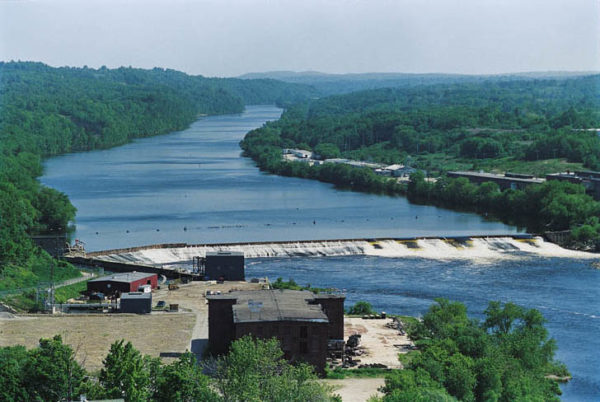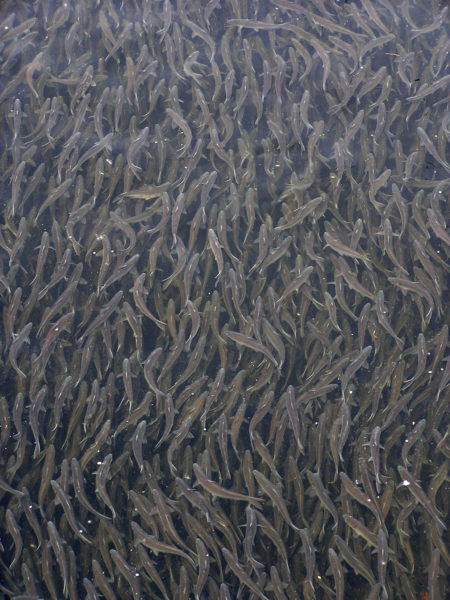By Pete Didisheim, guest author
Over the past 200 years, the Kennebec River has gone through a remarkable cycle of depletion and recovery. Sitting on the banks of the river today, watching osprey in flight and sturgeon breaching, it is difficult to picture how polluted and damaged this river had become. And not that long ago.
Once one of the nation’s most productive fisheries, the Kennebec suffered a serious blow in 1837 when the Edwards Dam was built in Augusta. That action decimated huge populations of salmon, sturgeon, river herring, and other sea-run fish.

Edwards Dam, Courtesy of NRCM
Join a challenging discussion, happening all over Maine, of how to balance the diverse and competing interests around rivers and dams at ‘Balancing Those Dam Interests’, one of our morning sessions at our 2017 Summit in Westbrook on October 18th.
Overfishing, log drives, municipal sewage, paper mill wastes, and other industrial toxins added further, gross insult to the Kennebec. By the mid-1960s, massive fish kills were frequent as dissolved oxygen levels in the river collapsed. But passage of the Clean Water Act in 1972, and removal of the Edwards Dam in July 1999 and Fort Halifax Dam in 2008, spurred a stunning recovery of life to a nearly dead river.
According to the Department of Marine Resources, more than 3.5 million alewives passed through the Benton Falls fish lift this spring, swimming swiftly past the former sites of two dams that blocked the migration that’s wired in their DNA. The Sebasticook now hosts one of the largest river herring runs in the nation, attracting dozens of Bald Eagle and countless other birds of prey interested in this surge of life, and lunch.

Alewives – Photograph by Margaret Pizer, Courtesy of The Nature Conservancy
As part of the team that worked for more than 15 years urging removal of these dams, I have been thrilled by the river’s rebirth. The results have exceeded our predictions. Important connections between the ocean and inland waters have been restored, as have relationships between the fisheries, the river, the wildlife, and riverside communities. Importantly, removal of the Edwards Dam 18 years ago demonstrated that nature will return with a vengeance if you give it a chance. For many of us in this line of work, that’s our goal, to give nature a fighting chance to recover from the impacts of humanity.
More information about the Edwards Dam Removal available here on the NRCM Website.
In the Kennebec, nature’s recovery has been a sight to behold. And because of that victory, we were able to imagine and achieve similar successes on the Penobscot. This is what progress can look like in the effort to provide stewardship and balance to the landscape we call home.
Pete Didisheim is the Advocacy Director at the Natural Resources Council of Maine
